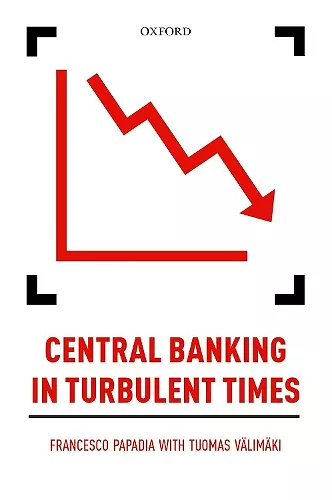Central Banking in Turbulent Times
Francesco Papadia author Tuomas Valimaki author
Format:Hardback
Publisher:Oxford University Press
Published:15th Mar '18
Currently unavailable, and unfortunately no date known when it will be back

Central banks came out of the Great Recession with increased power and responsibilities. Indeed, central banks are often now seen as 'the only game in town', and a place to put innumerable problems vastly exceeding their traditional remit. These new powers do not fit well, however, with the independence of central banks, remote from the democratic control of government. Central Banking in Turbulent Times examines fundamental questions about the central banking system, asking whether the model of an independent central bank devoted to price stability is the final resting point of a complex development that started centuries ago. It dissects the hypothesis that the Great Recession has prompted a reassessment of that model; a renewed emphasis on financial stability has emerged, possibly vying for first rank in the hierarchy of objectives of central banks. This raises the risk of dilemmas, since the Great Recession brought into question implicit assumptions that the pursuit of price stability would also lead to financial stability. In addition, the border between monetary and fiscal policy was blurred both in the US and in Europe. Central Banking in Turbulent Times asks whether the model prevailing before the Great Recession has been irrevocably altered. Are we entering, as Charles Goodhart has hypothesized, into the 'fourth epoch' of central banking? Are changes to central banks part of a move away from the global liberal order that seemed to have prevailed at the turn of the century? Central Banking in Turbulent Times seeks to answer these questions as it examines how changes can allow for the maintenance of price stability, while adapting to the long-term consequences of the Great Recession.
The global financial crisis started a transformation of central banking by showing that the nexus between price stability and financial stability is more complex than was previously understood. In this book, Francesco Papadia and Tuomas VÃlimÃki, not only offer a superb survey of the central banking experience through the crisis, but also identify the most important future challenges to monetary policy. An essential and provocative read to a broad range of audience from policy-makers to market analysts, from scholars to students of economics, to all those who want to deepen their understanding of central banks in the great financial crisis and their challenges thereafter. * Erkki Liikanen, Governor, Bank of Finland *
Central banking will never be the same after the great financial crisis. We have only begun to see how this long-established institution seeks to adjust to the new environment â an environment that it has done so much to shape. The book offers a unique account of this institutional and intellectual journey by two authors who have lived this extraordinary experience in the trenches and have a deep understanding of the subject. A great read for anyone interested in this defining historical moment. * Claudio Borio, Head of the Monetary and Economic Department, Bank for International Settlements *
a book which is detailed and thoughtful enough for the expert while being neither too long nor too heavy for the interested observer...In summary, this is a book which will inevitably be mainly bought by and read by those working in finance. And they, especially central banking practitioners, will derive huge benefit from it. But it deserves a wider audience too; there is much here for the interested generalist, and the conclusions will help shape the world's financial system for many years to come. * John Nugée, Laburnum Consulting Ltd *
ISBN: 9780198806196
Dimensions: 237mm x 163mm x 25mm
Weight: 688g
348 pages